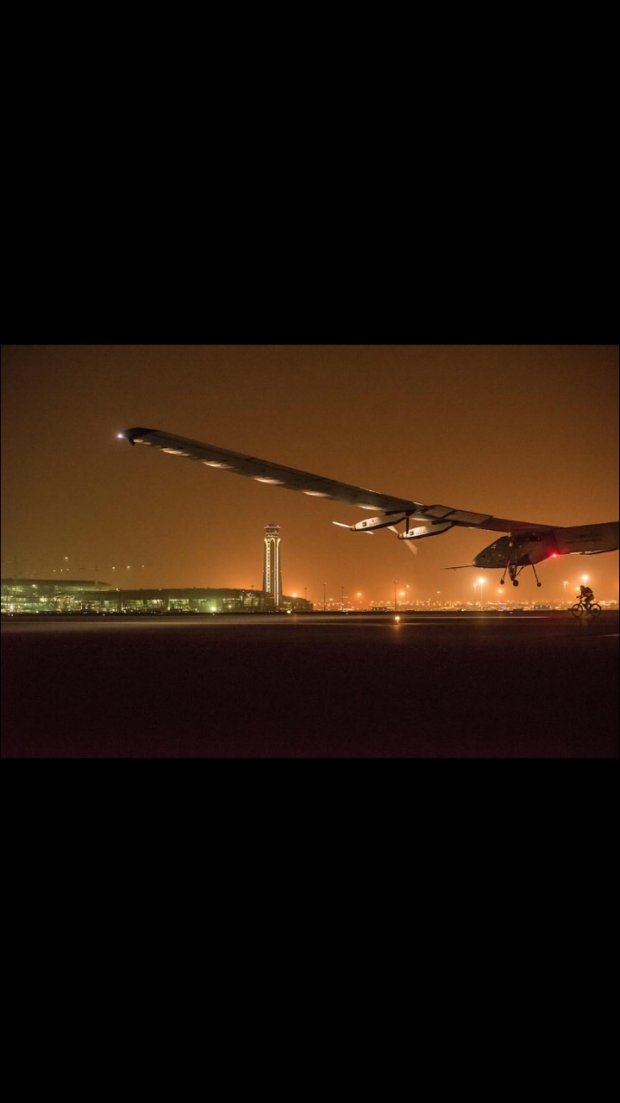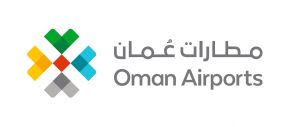Solar Impulse Flyer Makes Historic First Stop in Muscat on Global Circumnavigation

The globe-trotting Solar Impulse 2 (Si2) landed at Muscat International Airport on Monday evening, touching down silently on the runway following a trouble-free 12 hour first leg flight from Abu Dhabi. Solar Impulse 2 pilot André Borschberg emerged from the flyer to be greeted by a welcoming reception presided over by His Highness Sayyid Shihab bin Tariq Al Said, Advisor to His Majesty Sultan Qaboos, His Excellency Dr Mohammed bin Nasser Al Zaabi, CEO of the Public Authority of Civil Aviation (PACA), their Excellencies, and Sheikh Aimen Ahmed Al Hosni, General Manager of Muscat International Airport.
The landing marks the completion of the first leg of the global circumnavigation for the innovative solar-powered aircraft. Piloted in turns by Bertrand Piccard and André Borschberg, the Solar Impulse is designed to fly continuously day and night powered only by sunlight collected by solar cells and stored as electricity in onboard lithium batteries. The ground-breaking aircraft will travel to 12 countries in an historic attempt to fly around the world without using a drop of fuel, travelling approx. 35,000 kilometres over the course of its journey. The Solar Impulse project is the fruit of 13 years of research and testing by co-founders Bertrand Piccard and André Borschberg, two Swiss pilots whose idea was initially thought to be an impossible dream.
Congratulating the pilots on their safe arrival in Oman, His Highness Sayyid Shihab bin Tariq Al Said, Advisor to His Majesty the Sultan and Chairman of The Research Council noted, “We are proud that Muscat international airport is the first stop for the Solar Impulse 2, the solar powered aircraft set to journey around the world and considered to be the pivotal moment in our quest towards a more sustainable environment-friendly future with the use of clean energy. I hope the reception of such a brilliant technological innovation in Oman will motivate the next generation of Omanis to be more creative and innovative in order to develop our vision for the future; as well as help the Sultanate play its part in contributing towards the growth and development of human civilization as a whole. We are delighted to welcome both pilots; Bertrand Piccard and André Borschberg to Muscat, and for them to share with us their unique experience in human endeavor.”
Welcoming his fellow countryman upon their arrival in Muscat, Christian Winter, the Swiss Ambassador to Oman commented, “The arrival here this evening of the Solar Impulse underlines the close cooperation and mutual understanding between the Sultanate of Oman and Switzerland. In November last year, we officially opened our Swiss Embassy here in Oman, as a recognition of the close ties enjoyed by our two countries since diplomatic relations were first established in 1973. Through this relationship we seek to foster close collaboration in the areas of science, technology and education with the aim of strengthening cooperation in terms of research and innovation. The free exchange of ideas between scientific institutions and universities is of mutual benefit to both our countries, and I hope the stopover by my fellow countrymen Bertrand Piccard and André Borschberg and their amazing Solar Impulse flyer will inspire the people of Oman on how the use of clean renewable energy plays an increasingly important role in the future of the planet we all share.”
Safely secured on the tarmac at Muscat International Airport, the next leg of the Solar Impulse adventure will see the aircraft cross the Gulf of Oman heading onwards to Ahmedabad and Varanasi, India and onto Mandalay, Myanmar. From Myanmar, the Si2 will fly parallel to the Himalayas and north to China, stopping in Chongging before flying an expected 20 hours on to Nanjing. After crossing the Pacific Ocean via Hawaii on an expected five-day journey, Si2 will fly across the continental US, stopping in three locations including Phoenix, Arizona, and New York. After crossing the Atlantic, the final leg will include a stopover in Southern Europe or North Africa before arriving back in Abu Dhabi late July or early August.
Commenting on the ground-breaking technology behind the Solar Impulse flyer, Sheikh Aimen Ahmed Al Hosni, General Manager of Muscat International Airport said, “The technology behind this incredible machine inspires all Omanis - young and old - to embrace sustainable and renewable energy for the benefit of future generations. As a nation of explorers, we’re extremely proud that Oman is the first stop for this historic circumnavigation by the Solar Impulse flyer. The adventure is expected to take approximately 25 flight days spread over five months, with the aircraft travelling at speeds of up to 100 kilometres per hour, and flying at slower speed at night to prevent the batteries from draining too quickly. The sun-powered vehicle has a 72-metre wingspan, slightly larger than that of a Boeing 747, but weighs just 2,300 kilograms, approximately the same as a family car. ”
The Solar Impulse 2 was completed in April 2014 and has 17,248 solar cells built into its wings, which supply four electric motors with enough energy for the machine to fly. During the day these cells recharge lithium batteries, allowing Solar Impulse 2 to operate during night time as well. Because the plane uses solar energy, sunlight is the main determination of flight path. The pilots and their team of 80 technicians alter and adjust plans according to weather even in mid-flight. A 3.8-metre cockpit sits at the front of the plane, and has been specially designed so that the pilot can live within the space for up to one week. Unlike most aircraft, the cockpit is not pressurised in order to keep the overall weight of the vehicle to a minimum.
Commenting on the safe completion of the first leg of their circumnavigation, Bertrand Piccard, co-founder and co-pilot of Solar Impulse flyer noted, “With our attempt to complete the first solar powered round-the-world flight, we want to demonstrate that clean technology and renewable energy can achieve the impossible. We want the youth of Oman, leaders, organisations and policymakers to understand that what Solar Impulse can achieve in the air, everyone can accomplish on the ground in their everyday lives."
As the global circumnavigation is expected to take five months in total, stop-offs at each location allow the Solar Impulse team and pilots to engage in discussions about renewable energy. Bertrand Piccard adds, “Stopovers create important moments for us to communicate our message to the governments, the media and the schools and universities in every country. We want to demonstrate that clean technology and renewable energy can achieve the impossible.”


